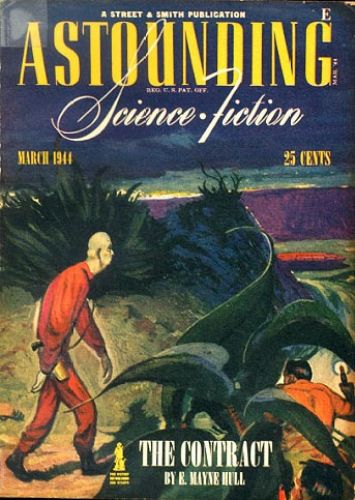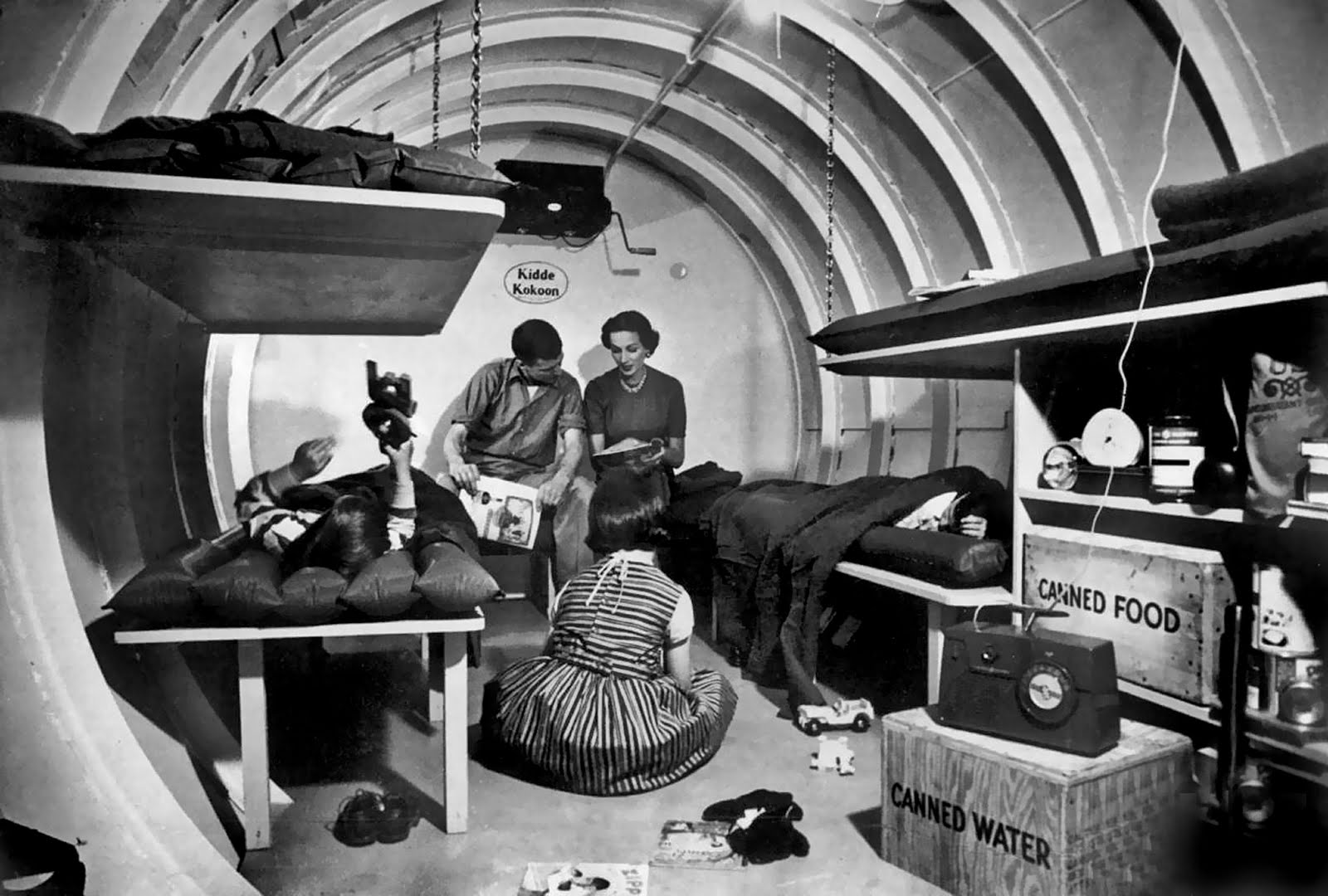
Science was mankind’s savior and his destroyer. The world lived in reach of the stars and under the shadow of the atom. The related competitions between Communism and Capitalism- the Cold War and the Space Race- demonstrate the dichotomy of the role of science and technology in the 1950s.
The ‘50s kick off what is often known as the atom age- a time of great optimism about the future atomic power could bring about. However, the new advances in nuclear technology also led to the amassment of atomic weapons on the parts of the United States and the Soviet Union that had the potential to end the world many times over.
Another common term for the era heralded by the 1950s is the Space Age. The discoveries of the industrial revolution and two world wars put the exploration of the final frontier into the realm of possibility at last. However, the competition to be the first to touch the heavens escalated into another Soviet-American conflict- The Space Race.
The technological advances in the 1950s that sparked so much fear, hope, and competition included the tests of the first hydrogen bombs, the discovery of the double helix structure of DNA, the polio vaccine, intercontinental television, the foundation of CERN, and NASA, and the creation of the first nuclear power plants.
As it was a time saturated with science and speculation, it only makes sense that science fiction flourished during the 1950s.
Science Fiction:
Literature-

Rising science fiction superstar Isaac Asimov had been publishing stories about robots and artificial intelligence since the beginning of the 1940s. Finally, in 1950, nine of these short stories were compiled into I, Robot, which continues to be one of his most popular works to this day. In the second story, “Runaround”, Asimov introduces the Three Laws of Robotics, which serve as the code of conduct programmed into every robot in his universe. These laws have gained wide acceptance in the sci-fi community, and are still referenced in both science fiction and pop culture to this day.

Another iconic anthology was released in 1950, this time by Ray Bradbury- The Martian Chronicles. It tells in vividly beautiful language of the future history of Earth’s interaction with the planet Mars.
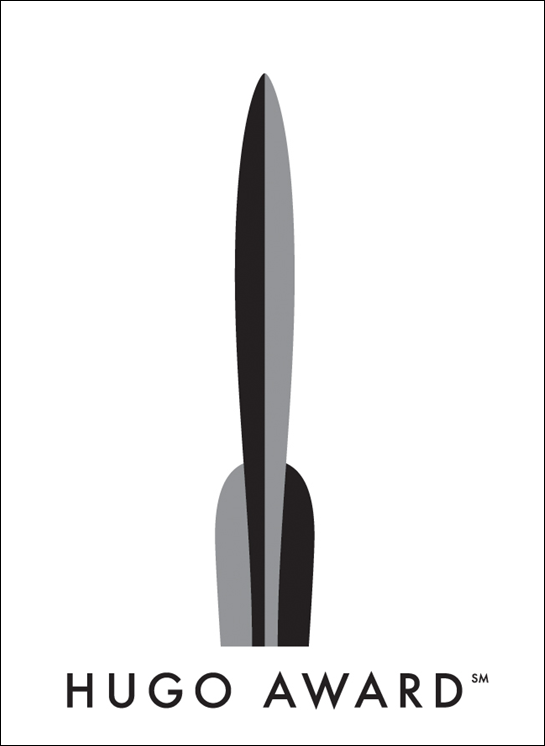
In 1953, the first Hugo Award was given to Alfred Bester for his novel The Demolished Man. It is a science fiction police detective drama which speculates as to the nature of criminal justice in a world where telepathy exists.

That same year, Ray Bradbury published what has become perhaps his most influential work, Farenheit 451, the tale of a dystopian world where books are banned, and “firemen” burn any books that are found.

Also in 1953, Arthur C. Clarke published Childhood’s End, in which a peaceable alien race takes over planet earth by creating an apparent utopia, which leads to the downfall of the human race.

Another in the new wave of 1950s dystopian novels was Time Out of Joint, published by Philip K. Dick. It was a bizarre work of sci-fi that questioned the very nature of reality.
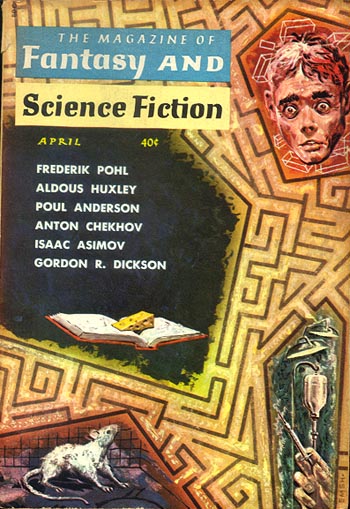
In 1959, Daniel Keyes published his short story “Flowers for Algernon” in the April edition of The Magazine of Fantasy and Science Fiction. It concerned the moral and ethical issues of an experimental surgery on a mentally disabled man meant to increase his intelligence. Keyes went on to expand the story into a full-length novel in 1966.
Magazines-
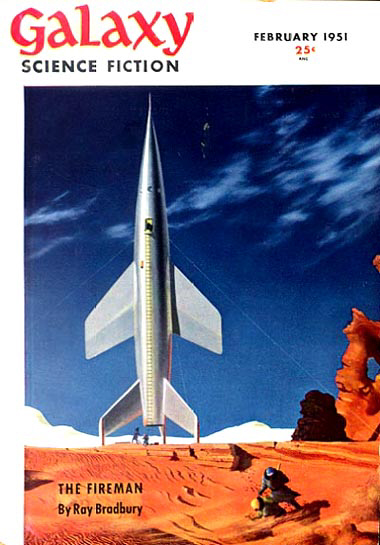
The science fiction magazine industry boomed in the 1950s, with fifteen new magazines created in the year 1950 alone. One of these was Galaxy Science Fiction, and influential magazine which was considered to have an intellectual edge on all of its competitors.
Galaxy published the short story which Ray Bradbury later expanded into Farenheit 451, and the serialization of Alfred Bester’s The Demolished Man.
Film-
The 1950s are considered by many to be the Golden Age of Science Fiction Film, and not without reason. Though there were many science fiction B-movies released in this decade, some of the most influential sci-fi films ever came from the minds of 1950s film-makers.
.jpg)
Destination Moon, released in 1950, holds the distinction of being one of the earliest non-horror sci-fi movies. Breaking the mold of Frankenstein, and The Invisible Man, Destination Moon is the story of the possible troubles and triumphs of America’s first lunar landing.

The Day the Earth Stood Still, from 1951, is a surprising departure from ordinary alien invasion stories, and has much to say to the post-war society it was made for.

In 1953, another popular adaption of H.G. Well’s classic The War of the Worlds was produced by George Pal and directed by Byron Haskin.
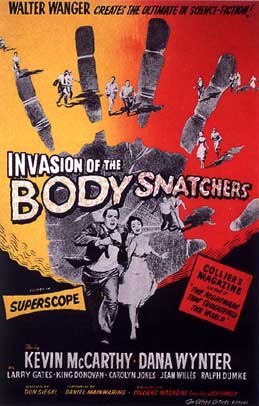
Invasion of the Body Snatchers was released in 1956. It was a well-made and powerful commentary on the restriction of individuality, which was a deep-rooted fear in a society fighting against communism.
Japanese film, Godzilla, which is seen by many today as the beginning of a corny B-movie franchise, carried very different connotations for the Japanese audience of 1954. It was a creative and thoughtful response to the creation of the atomic bomb, which had been field tested on two of Japan’s cities at the end of the Second World War.
Forbidden Planet, released in 1956, was a beautiful, technicolor space adventure based on Shakespeare’s The Tempest. It was an inspiration for many science fiction creators to come, including Gene Roddenberry and George Lucas.
Television-

The 1950s were the era of science fiction television anthologies. One of the earliest iconic anthologies was Science Fiction Theatre. It began in 1955, and was hosted by Truman Bradley. Science Fiction Theatre was an inspiration for later television anthologies such as The Twilight Zone and The Outer Limits, and was even referenced in the Back to The Future franchise as Marty McFly’s father’s favorite television show.

The man of steel made his way onto the small screen in 1952 with the show Adventures of Superman. These weekly technicolor episodes starred George Reeves in the titular role of the quintessential American superhero.

Perhaps the best science fiction/fantasy/horror television show ever began airing in 1959. Hosted by its enigmatic creator Rod Serling, the Twilight Zone was a hard sell to studios, but a massive success. The weekly stories explored moral and metaphysical concepts in creative ways, and often ended in dark and surprising plot twists.

The Twilight Zone featured many actors who had already played, or would go on to play iconic roles in film and television, including Rod Taylor, William Shatner, Robert Redford, and George Takei. The concepts explored in The Twilight Zone have inspired and informed almost all of the science fiction that has been created since.
Keep on glowing in the dark,
Elora



